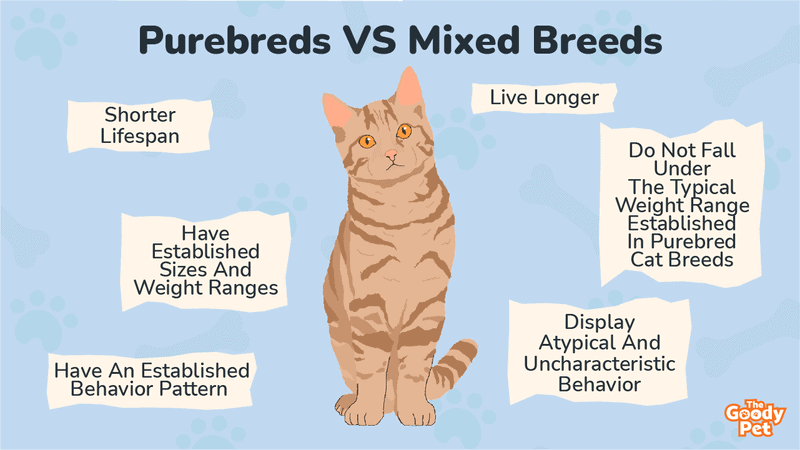Identification of cat breeds is one of the most commonly discussed issues in the feline world. And understandably, most kitty cat owners are eager to know whether their furry friend is mixed or purebred.
So, how can you determine your cat’s breed? You can determine your cat’s breed by physically observing its size, body type, coat color, and fur length and by running a cat DNA test. In the same vein, cat breeds can be deduced from their peculiar behaviors and by watching out for unique body features.
Knowledge of your cat’s breed is important for a better understanding of your feline’s peculiarities and when seeking solutions to certain medical conditions that may trouble your kitty cat. But apart from that, it’d be a real shame if you weren’t able to give a convincing answer when posed with the question of what your cat’s breed is; consequently, that’s why I’ve put together this comprehensive guide to help you identify your feline’s breed.
How Can I Identify What Breed My Cat Is?
Purebred VS Mixed-Breed Cats
Before we go into the physical characteristics that differentiate different cat breeds, it is important to establish a difference between purebred and mixed-breed cats.
Purebred cats, by definition, are felines whose ancestry consists of cats from the same breed only. Mixed-breed cats, on the other hand, are felines that are born as a result of breeding two distinct cat breeds.
Identifying a purebred cat by its physical appearance is considerably easier, as there are breed standards that the feline must conform with. Mixed-breed cats, in contrast, are more difficult to identify by physical examination, as one can’t really say which of the parent breed’s genes will be more dominant in the feline’s appearance.
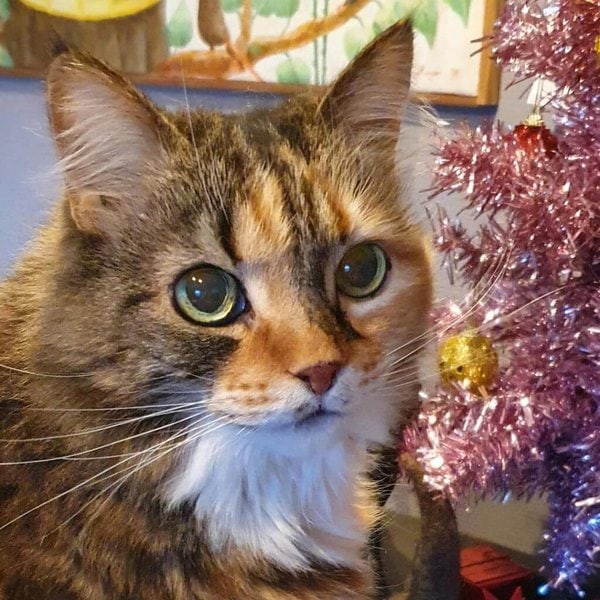
How To Identify What Breed Your Cat Is?
There are several features with which you can determine your cat’s breed, and some of the more common ones include:
Body Parts
One of the most commonly used methods with which you can identify your cat’s breed is to physically examine and compare the feline’s physical features with the accepted breed standard. And for reasons stated earlier, this method of examining body parts is more accurate when used for purebred felines.
That said, physical features typically used to identify a cat’s breed include:
- Face shape – flat, narrow, or round
- Tail length – long, short, or no tail
- Ear type – pointed, curly, or folding
- Nose – pointed or pushed in
- Eye color
Size
If your adult cat weighs less than 10 lbs, then it most likely belongs to the small-sized breeds. Typical examples of these cute, little purring machines include the Munchkin, Japanese Bobtail, and the Devon Rex cat breeds.
Medium-sized adult cats typically weigh between 10 to 15 lbs, and some common examples include the Abyssinian Cat, American Shorthair Cat, and Oriental Cat breeds.
Large-sized adult cats, as expected, weigh upwards of 15 lbs. And some prominent examples of large-sized felines include the Bengal Cat, Persian Cat, and the Norwegian Forest Cat breeds.
If your cat’s weight is beyond the typical weight range of its breed or close to the boundaries, there is a high chance that your cat is not purebred.
Body Type
A cat can also be identified by the shape of its body, with the most common body types being oriental, cobby, semi-cobby, foreign, semi-foreign, or substantial.
Oriental cats are characterized by long, slender bodies with triangular heads. And common examples include the Oriental Shorthair and Siamese.
Cobby cats like the Persian and Burmese typically have short, muscular bodies; while the Semi-cobby felines like the American and British Shorthair boast thicker, big-boned structures.
Foreign cat breeds are identified by their long, lean bodies and almond or oval-shaped eyes. Semi-foreign cats, in contrast, have shorter, standard-sized bodies, but they retain peculiar eye shapes. Popular examples of foreign breed cats include Abyssinians and the Japanese Bobtail, while the Sphynx is a renowned semi-foreign feline.
Substantial kitty cats, as inferred by the name, are large felines with thick bodies, with the most prominent examples being the Maine Coon, Ragdoll, and Bengal cats.
Coat Colors And Patterns
Both purebred and mixed-breed cats come in a wide range of colors; Hence this may not be one of the better metrics to use in determining your kitty cat’s breed. Regardless, cats majorly come in three main colors – red, black, and white.
It is the combination of these coat colors that gives birth to varying coat patterns, which, when combined with other features, is a more effective means of judging a cat’s breed. Generally, cat breeds are classified into Tabby, Tuxedo, Calico, and Tortoiseshell based on the coat pattern.
Tabby Cats
Arguably the most popular of all coat patterns, Tabby cats are characterized by long stripes, swirls, and spots typically present on their coats. A Tabby cat is also famous for having an ‘M’ shaped pattern on its forehead.
Tabby cats can also appear in different colors ranging from red, blue, brown, and black. And this color pattern makes up the vast majority of mixed-breed felines like the American Shorthair.
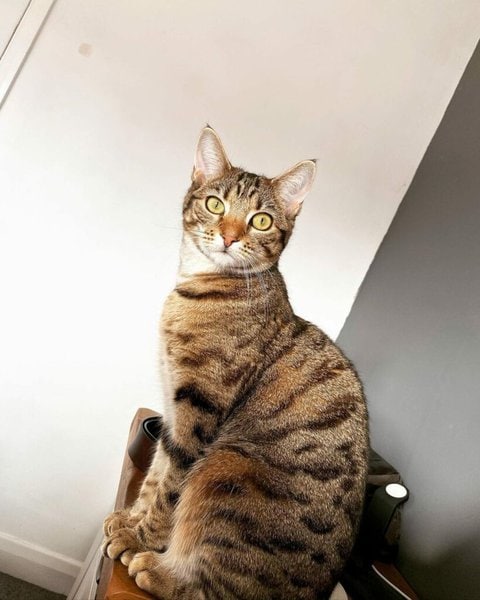
Tuxedo Cats
Tuxedo cats are famous for their attractive white and black coats. And this pattern is common among both purebred and mixed-breed felines, such as the Persian, Manx, and Maine Coon cats.
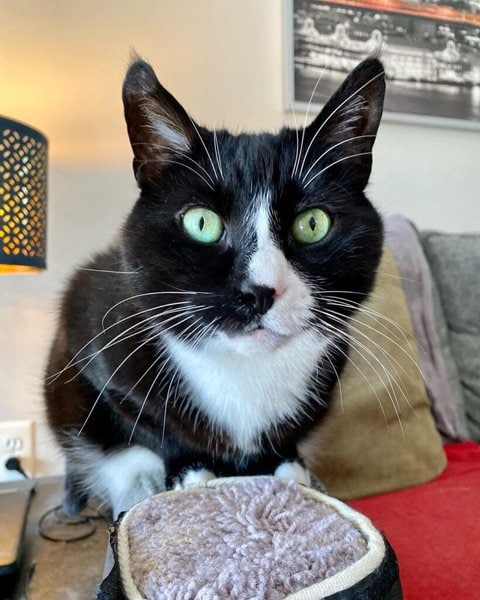
Calico Cats
Calico cats typically have a coat pattern consisting of any three colors, which, more often than not, includes white. Felines sporting this coat pattern include purebreds like the Scottish Fold and mixed breeds like the Persian Mix.
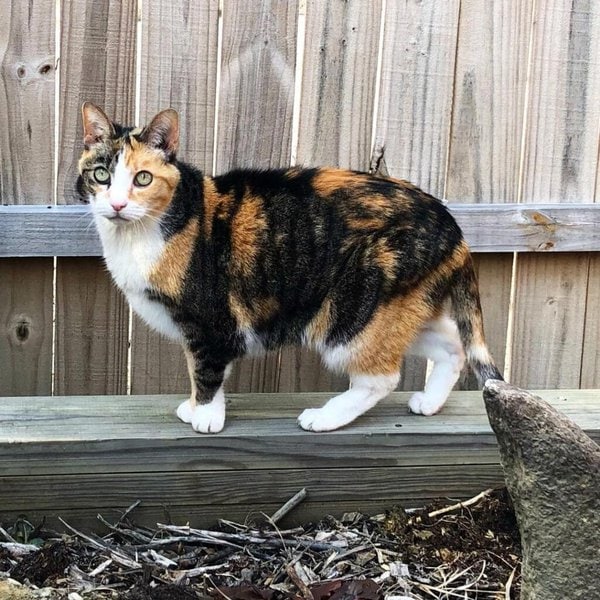
Tortoiseshell Cats
Torties usually have coats with patterns consisting of the colors red and black, along with a washed-down, lighter shade of both colors – this could either be cream or gray. And these color patches can come in either a woven or patched pattern.
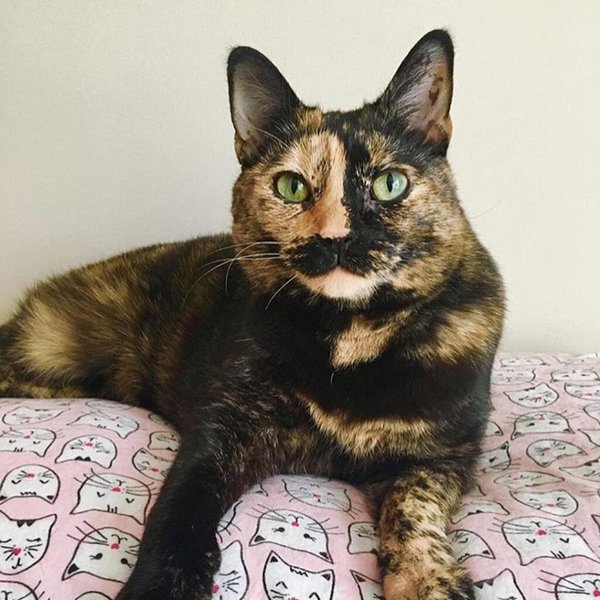
As obtainable with most other patterns, both purebred and mixed-breed felines can come with Tortie coats.
Fur Length
Domestic cats are categorized into four main groups based on the length of their fur – the hairless, shorthair, medium hair, and longhair cats.
If your cat has no hair on its body, then there’s every chance of it belonging to one of the hairless cat breeds like the Sphynx, Elf, and the Bambino feline breeds.
Shorthair cats have little fur, and they are, more often than not, a mix of two different feline breeds. Popular shorthair cats include the Manx, American Shorthair, and Oriental Shorthair.
Medium hair cats are felines with a coat that is considerably longer than what is obtainable with shorthair cats but not long enough to be classed as longhairs. And just like their shorthair counterparts, medium hair cats are mixed breeds typically produced by breeding longhair and shorthair cats.
Cats with long or fluffy, and silky fur typically belong to the longhair category. And some common examples include the Persian, Scottish Fold, and Maine Coon cat breeds.
Behavior
In addition to examining the physical characteristics, you can also observe a cat’s behavior and temperament to make a calculated guess about the feline’s breed.
Some cat breeds, such as the Siamese and the Abyssinian, are known to be extremely extroverted and playful. And other felines, such as the Ragdoll and American Shorthair, are renowned for their laidback personalities.
Cats, in general, are smart, but if you notice your cat displaying extremely high levels of intelligence, such a feline may be one of the smarter breeds out there. Kitty cats on the highest tier of feline intelligence levels include the Siamese, Abyssinian, Bengal, and Burmese cats.
It has to be said that observation of behavior may not be the most accurate method in identifying your cat’s breed, but it will certainly help in narrowing down the possible options.
Is There A DNA Test For Cats?
When done right, physical observation can be a reliable method of judging a cat’s breed and ancestry. But the most accurate method of telling what breed your feline is, and for determining whether your furry friend is purebred or mixed, is by running a breed test specially designed for cats.
How Do Cat DNA Tests Work?
The basic idea behind cat DNA tests is to help cat owners learn as much as possible about their feline’s genetic similarity to different breeds, common genetic illnesses, and peculiar breed traits.
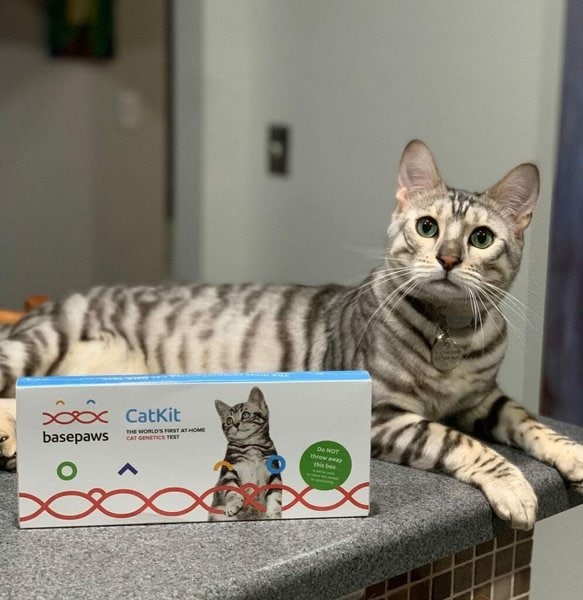
How To Run A Home DNA Test To Determine Your Cat’s Breed?
Below are the steps to successfully run a home DNA test to tell if your kitty cat is purebred or mixed:
Purchase A DNA Test Kit
The advent of home DNA test kits has made it considerably easier for cat owners to request, and receive info pertaining to their feline’s genetic composition.
And one of the best DNA test kits for cats I recommend, for those looking to determine whether their feline is purebred or mixed, is the highly reliable Basepaws Cat DNA Test Kit.
The Basepaws Cat Test Kit provides feline parents with an avenue to request information on their cat’s breed history. And in addition to DNA testing, Basepaws checks for the presence of common cat diseases in your furry friend.
Sample Collection
After purchasing the Basepaws test kit, the next course of action is to collect a DNA sample from your kitty cat, which will then be tested to determine your feline’s ancestry.
However, you should ensure your kitty cat hasn’t eaten or drunk water, at least, 30 minutes before sticking a swab into its mouth for sample collection. And it may also be helpful to enlist the help of someone to help hold your kitty cat steady while you collect the sample.
To collect a DNA sample from your cat:
- Stick the swab into your kitty’s mouth for between 3 to 5 seconds.
- During this time, try to make contact with the cat’s tongue, cheek lining or gums to collect samples.
Waiting For A Result
Once you’ve collected the DNA sample from your feline, package it carefully, following the provided instructions, and send it out to the laboratory for testing.
The time duration to get a result varies from lab to lab, but Basepaws typically sends in DNA results containing info on your kitty cat’s breed within four to six weeks, after you mail the sample.
Can A Vet Do A DNA Test?
As an alternative to the home DNA test, you can also consult with your vet doctor to run a cat ancestry test on your furry friend. And in addition to you find out your cat’s breed history from your vet, genetic testing will also help in the early detection of diseases, and recommendation of preventive measures to fight against ailments in your furry friend.
What Can I Get from A Cat DNA Test Carried Out by A Vet?
The result of cat genetic testing by vets typically includes info such as:
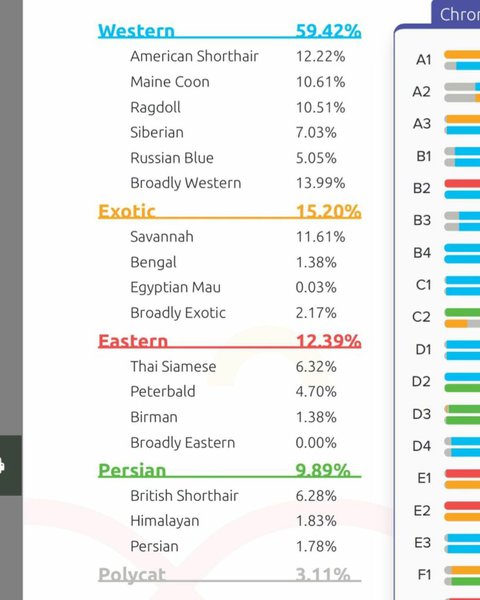
Breed Details
Genetic testing helps determine whether your cat is purebred. And if your cat is a mixed breed, information on the parent breeds is usually contained in the result.
Physical And Personality Traits
Purebred cats are typically identified by breed-specific physical features and their unique personalities, temperaments, and behavior; Info on this is also present in the results of DNA testing carried out by a vet.
Genetic Conditions
Purebred cats are susceptible to a wide range of genetic conditions, and DNA testing to determine your feline’s ancestry may help reveal these conditions. For mixed cats, genetic testing also reveals health conditions that the parent breeds are predisposed to, which may, in turn, affect the feline.
How Long Does A Cat DNA Test Take?
The average timeframe for the results of a cat’s DNA test to come in falls between 4 to 6 weeks after sample collection.
What Do Vets Need To Carry Out A DNA Test On My Cat?
Vets usually need to collect a small sample of your cat’s body cells to run a DNA test on your feline. This sample can be obtained either by swabbing in the cat’s mouth or by pricking your furry friend to collect blood.
How Can I Tell What Breed My Cat Is From A Picture?
Apart from a DNA test to verify your cat’s breed, there are body features peculiar to certain cat types, with which you can correctly guess a feline’s breed by just looking at its picture. And some of the most noticeable physical characteristics that can serve as a guide to determining a cat’s breed from a picture include:
Shape Of The Face
If your cat has a pushed-in, round face and a characteristically short snout, then it most likely belongs to the flat-faced, brachycephalic breed of cats. One of the most common examples of Brachycephalic felines is the Persian Cat. And other cat breeds typically found with flat faces include the Himalayan, Exotic Shorthair, and Burmese cats.
Cats with narrow pointed and triangular-shaped heads are more likely to be either one of the Oriental Shorthair, Siamese, or Peterbald cat breeds.
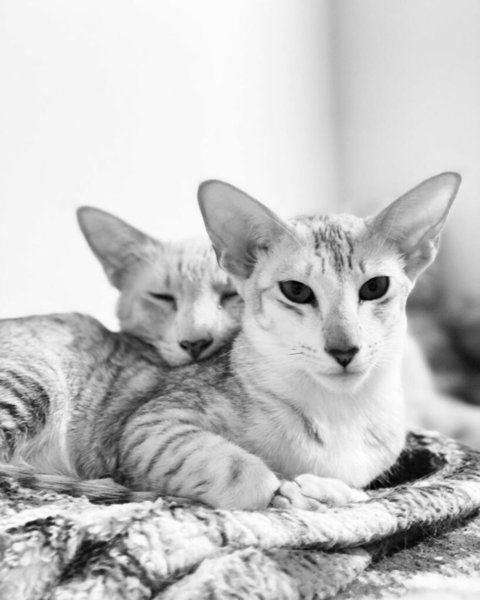
Eye Color
Most cats are born with green or blue-colored eyes. But if, by chance, you notice that the cat in the picture has a white coat and two different eye colors, then such a feline belongs to one of the breeds predisposed to a harmless genetic condition known as heterochromia.
Cat breeds that commonly have heterochromia include the Oriental Shorthair, British Shorthair, Japanese Bobtail, Persians, and Munchkin cats.
Not to worry, though, heterochromia in cats is pretty harmless, and it only gives your feline a unique appearance.
Ear Shape And Size
While most cat breeds will have round, pointed ears that stand upright above the head, it isn’t uncommon to come across the American Curl kitty cat, with ears curling away from the face toward the back of the head. And in addition to the pointed and curly types of ears, some felines, such as the Scottish Fold, have ears pressed flat towards the head.
Felines with hair on the tip of their ears are the lynx-tipped breeds, and this includes kitty cats like the Norwegian Foreign Cat and the Maine Coon.
Tail Length
Tails can also be used to class felines, and cats typically come with either short or long tails.
The average length for a cat’s tail is 11 inches, but it isn’t uncommon to come across mixed cat breeds like the American Bobtail, Japanese Bobtail, and Highlander with significantly shorter tail lengths.
And in what can be termed as a special case, the Manx cat is born without a tail.
Are Mixed-Breed Cats Healthier?
Mixed-breed cats are produced to be an improvement on purebred cats and are bred from a wider gene pool than purebred felines; Hence, the mixed-breed cats typically lead healthier lives than their purebred counterparts.
Mixed-breed felines are generally born with fewer genetic defects, and they suffer fewer health conditions than purebred cats. However, it isn’t unusual to see mixed felines suffer health issues typically associated with either of their purebred parents.
Lifespan
Because mixed-breed cats lead relatively healthier lives, their average life expectancy is higher, when compared to that of purebred cats.
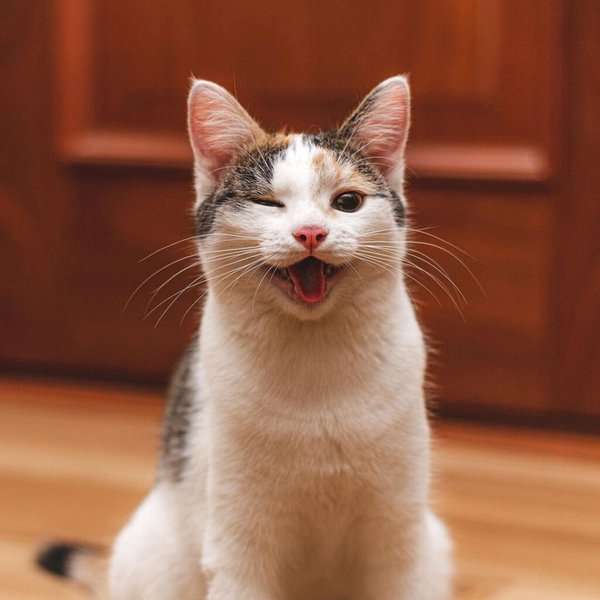
Personality Differences
Purebred cats typically have an established pattern of behavior; Hence, if you want a feline with a predictable habit, then it may be better to go for a purebred cat; This is particularly suited for those who lead relatively busy lives.
Mixed-breed cats, on the other hand, are a result of two distinct cat breeds and two different personalities; hence, it may be difficult to predict which of these characters will come to the fore. Consequently, you should go for a mixed-breed cat if you’re interested in keenly observing and playing an active part in your feline’s development.
Appearance
Purebred cats typically conform to a standard appearance, and if you’d like your kitty cat to have a certain look, then you should go for a purebred.
However, if watching your kitty cat grow and develop without a concrete idea of what its final adult form will look like excites you, then a mixed feline is the best bet for you.
Related Questions
What Is A Mixed-Breed Cat Called? Mixed-breed cats are commonly referred to as domestic or house cats, and it isn’t uncommon to hear them called Moggies in the UK. In a similar fashion, mixed-breed cats are also known as domestic shorthair or domestic longhair cats.
Why Are Purebred Cats So Expensive? Purebred cats are expensive to acquire because of the stringent breeding practices required to produce them. The average price for a purebred cat ranges from $300 to $1,200. Factors that contribute to the sky-high prices of purebred felines include breed, coat color, quality, registration fees for the kittens, as well as the exclusive nature of purebred parent cats.
Do You Need Papers To Own A Cat? Being in possession of certain papers and documents can help prove that you own a cat, but you don’t necessarily need papers to raise a cat. Some of the common documents used to prove ownership of a cat include adoption or purchase papers, vet records, microchip records, and tags.

